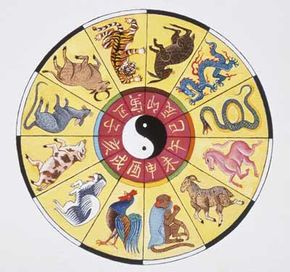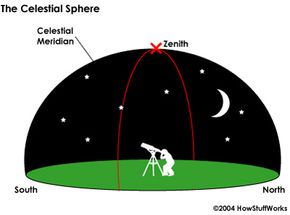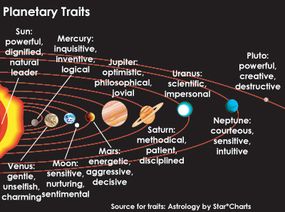The nature of Mars is chiefly to dry and to burn, in conformity with his fiery colour and by reason of his nearness to the sun, for the sun's sphere lies just below him.
- Claudius Ptolemy, Tetrabiblos
Early astrological systems were concerned with weather patterns, seasons and crops. Because early humans didn't understand the causes of things like eclipses or the retrograde movement of planets, they created stories, passed on for hundreds of generations, that tried to explain them in a context they understood. Shapes in the stars and the planets themselves became gods -- or at least symbols of gods. Every ancient culture had some form of science/religion that was concerned with patterns of movement in the stars. At this point, astronomy and astrology were one and the same. Ancient scientists observed and recorded the patterns they saw in the sky (astronomy); then, they extrapolated those observations to fit their cosmology and life experiences (astrology).
The Mayan, Aztec and Inca cultures of South America had complex astrologies based on a zodiac of 20, including symbols like the jaguar, the earthquake, the ape, rain and the dog (Snodgrass, pg. 13). These systems have not been passed on or incorporated into modern astrology because the civilizations themselves died out.
The Chinese had developed one of the most complex astrological systems by 1000 B.C., with some characters in written Chinese languages corresponding to their constellations. This system combined 24 divisions of the year with a 28-part lunar zodiac, as well as 12 branches that correspond to an animal (Campion, pg. 13). Someone born in a given year is thought to have certain characteristics -- for example, 2005 is the Year of the Rooster. In addition, each year has an element associated with it, further delineating someone's type as, say, a Fire Rooster or a Water Dragon.
In the 16th and 17th centuries, Jesuit missionaries brought western astrology to China, where it was incorporated to some extent into the traditional Chinese system. Today's Chinese astrology is a simplified system which only takes into account the animal years.
The western zodiac itself, the foundation of much of astrology, has followed a winding path before it became the system with which most of us are familiar. The Babylonians are usually credited with creating the basic system, assigning certain characteristics to the planets of which they were aware. These characteristics were based on the Babylonians' observations and their metaphorical ideas about what these observations meant. Because Mars, which they called Nergal, was observed to be red, and blood is red, they aligned Mars with war. Ishtar, or Venus, appearing in the early evening when lovers were likely to be outside spending time together, was made to represent love and fertility. Mercury, hard to spot and fast moving, was associated with deceit and speed (Snodgrass, pg. 17).
This general system absorbed influences from the many cultures that populated the Mediterranean and Middle East thousands of years ago. The specific names for the modern western zodiac come from the Greeks. The word Zodiac itself comes from the Greek root word zoe, or life.











